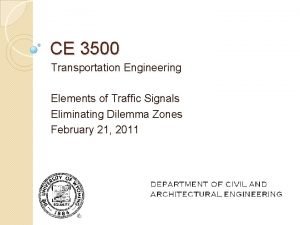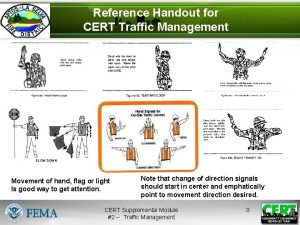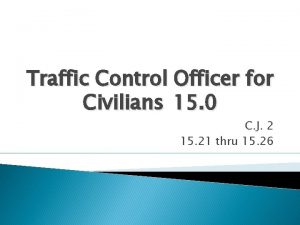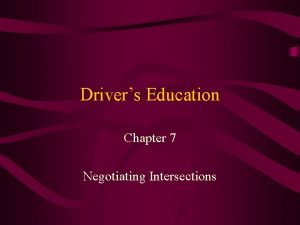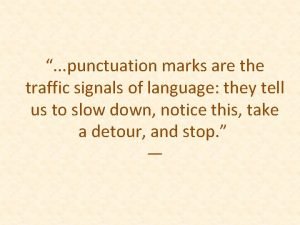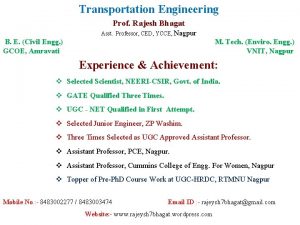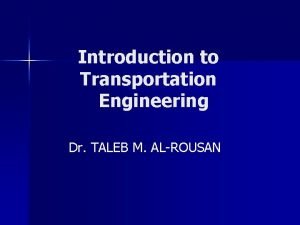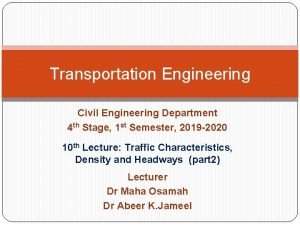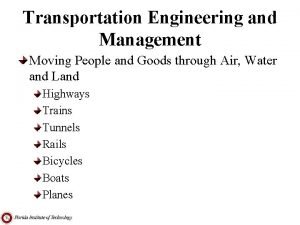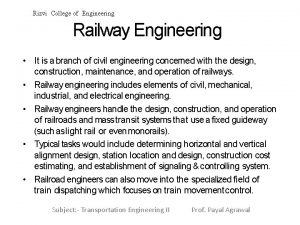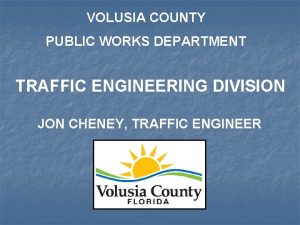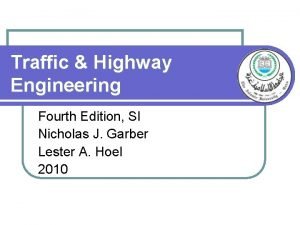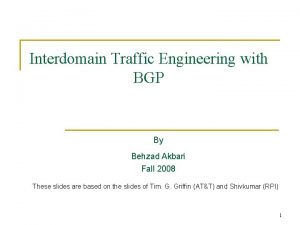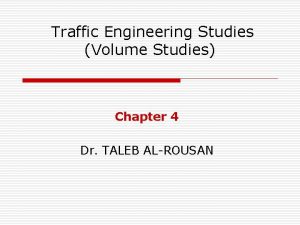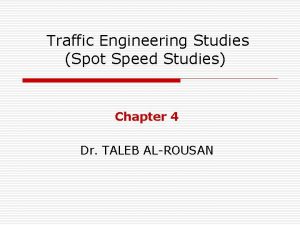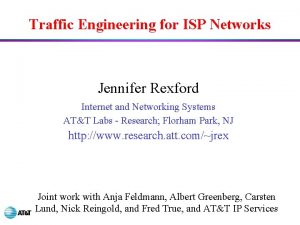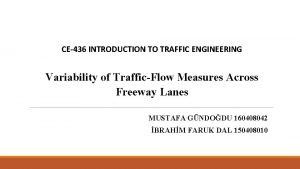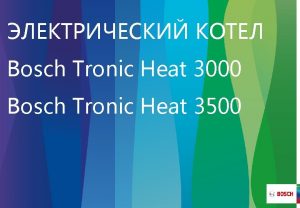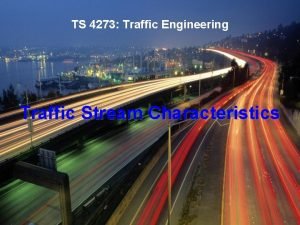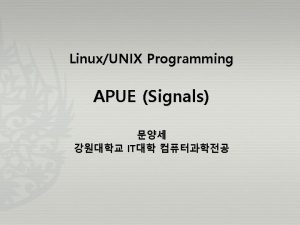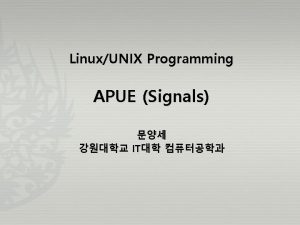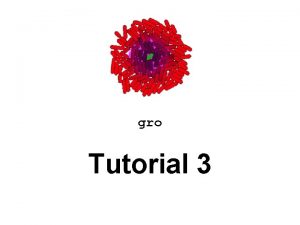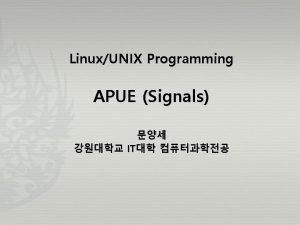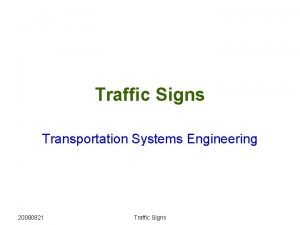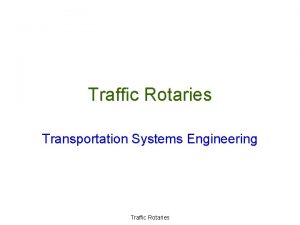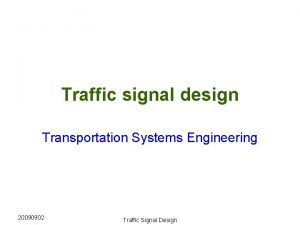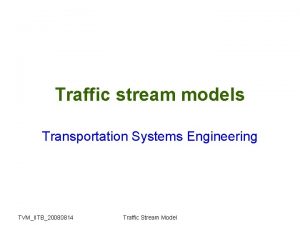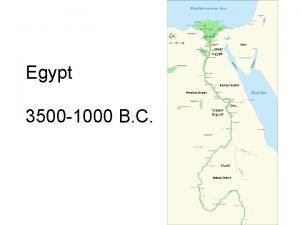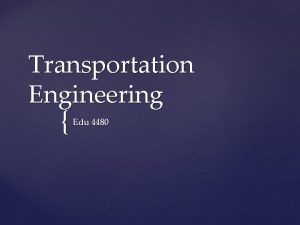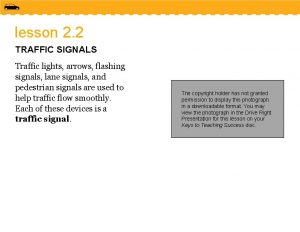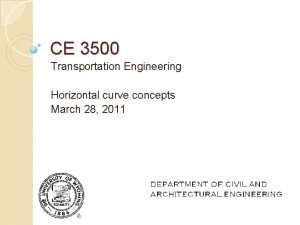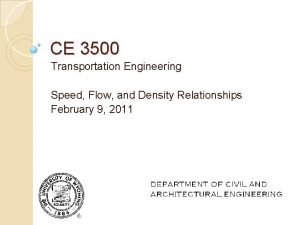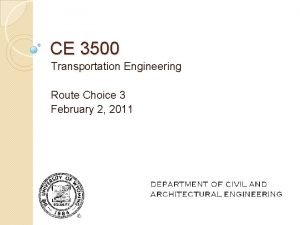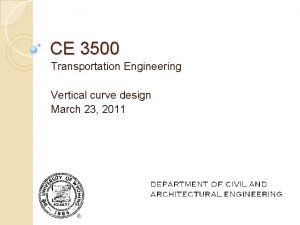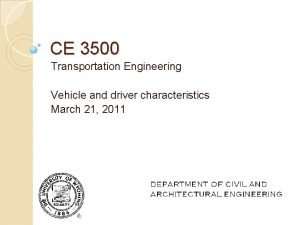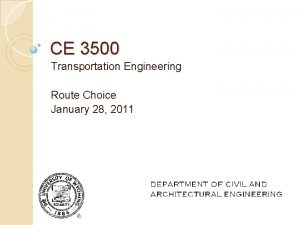CE 3500 Transportation Engineering Elements of Traffic Signals




























- Slides: 28

CE 3500 Transportation Engineering Elements of Traffic Signals Eliminating Dilemma Zones February 21, 2011

REVIEW

Let’s count vehicles as they enter and leave the queue. Arriving vehicles Arrival counter Departing vehicles Queue Departure counter

# vehicles Arrival curve Departure curve t

SIGNAL BASICS

Intersection diagram: Approach

Intersection diagram: SB WB 50 120 30 Peak hour turn counts EB NB

Discrete phases: Each movement only has one interval of green time Phase I: Phase II: 30 s 45 s Dashed line = permitted movement Solid line = protected movement

Discrete phases: Each movement only has one interval of green time Phase I: Phase II: 30 s 45 s

Overlapping phases: Some movements are green in more than one phase Phase IA: 5 s Phase IB: IC: 30 s 10 s

Cycle length: Time required for all intervals to occur. Which is better? A long cycle length or a short one?

Clearance time: Time at the end of an interval to allow vehicles to finish passing through the intersection. Yellow time All-red time

How much clearance time should we have? (What goes wrong if there is too much clearance time? too little? )

Another way to think about clearance time: what do you do when you see this?

Choice 1: Drive through the intersection Choice II: Hit the brakes As long as one of these choices is possible, there’s no problem. If neither is possible, then we designed it wrong. Dilemma zone: Area where a vehicle can neither stop in time nor make it through the intersection in time, when the signal turns yellow.

Choice 1: Drive through intersection Critical point. Too far away Can make it across intersection safely

Choice 1 I: Stop. Can stop in time Critical point. Too close

If the red zones overlap, we have a dilemma zone (you did it wrong). Can’t go Can’t stop

So we have to calculate these critical points. Say clearance time is Y Too far away Can make it across intersection safely What is this distance?

So we have to calculate these critical points. Say clearance time is Y Too far away Can make it across intersection safely xgo W What is this distance? L

The distance traveled by the vehicle is Yu. So Too far away Can make it across intersection safely xgo W What is this distance? L

What is the stopping distance for a vehicle? Assume deceleration rate a and current speed u Can stop in time Too close

What is the stopping distance for a vehicle? Assume deceleration rate a and current speed u Can stop in time Too close

Add PIJR time d (PIJR = perception, interpretation, judgement, reaction) Can stop in time Too close

If there is no dilemma zone, then which of the following is true?

What is the shape of this curve?

What is the shape of this curve? Causes problem at low speed Causes problem at high speed

Example: Speed limit is 40 mph, intersection is 45 ft wide. Our “design vehicle” is 20 ft long and can brake at 11. 2 ft/s 2. If PIJR time is 1 second, what is the minimum safe clearance time?
 Elements of traffic engineering
Elements of traffic engineering Highway engineering syllabus
Highway engineering syllabus Communicative signals and informative signals
Communicative signals and informative signals Communicative and informative signals
Communicative and informative signals Communicative signals and informative signals
Communicative signals and informative signals Traffic
Traffic Traffic whistle signals
Traffic whistle signals An uncontrolled railroad crossing usually has *
An uncontrolled railroad crossing usually has * Traffic signals of language
Traffic signals of language Incomina
Incomina All traffic solutions
All traffic solutions Scope of traffic engineering
Scope of traffic engineering About the bed
About the bed Transportation engineering meaning
Transportation engineering meaning Transportation engineering definition
Transportation engineering definition Space headway
Space headway Transportation engineering
Transportation engineering Railway engineering
Railway engineering Volusia county traffic engineering
Volusia county traffic engineering Traffic and highway engineering 4th edition
Traffic and highway engineering 4th edition Principles of intersection design
Principles of intersection design Traffic engineering bgp
Traffic engineering bgp Parking studies and characteristics
Parking studies and characteristics Monthly expansion factor formula
Monthly expansion factor formula Speed study in traffic engineering
Speed study in traffic engineering Traffic engineering
Traffic engineering Introduction to traffic engineering
Introduction to traffic engineering Traffic engineering network
Traffic engineering network Bosch tronic heat 3000/3500
Bosch tronic heat 3000/3500
